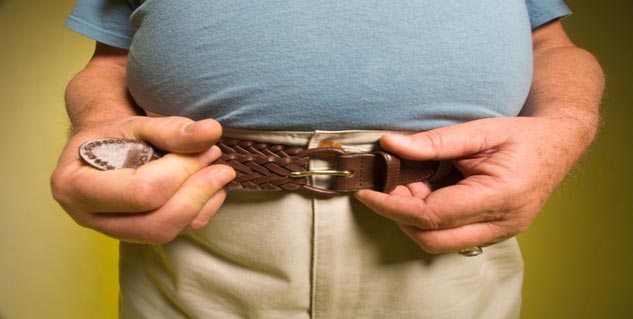How To Integrate Convenience Foods Into Your Diet
While it would be ideal to make all of our own snacks and meals from scratch everyday, the plain and simple truth is that most of us simply don't have that kind of time. This is where we turn to convenience foods to meet our dietary and weight loss needs. However, the right convenience foods in the right amounts can easily be integrated into almost any diet.
Shop Smart - Never shop on an empty stomach. This will only make it harder for you to make choices that are in your best interests. Always be prepared with a thorough shopping list and do not divert from it. If an aisle is full of tempting goodies but has nothing on your list, simply walk right by it, instead of down it. If you see something healthy that you would like, but it's not on your list, jot it down and add it to the list next time. This will provide you with something to look forward to. Reach for the smaller bags and boxes of what you need when possible. The less food you have leftover in your kitchen translates into less temptation.
Read Labels - All convenience foods are not the same. Depending on your chosen diet, some will fit much better into your routine than others. This is why it's important to become an informed consumer and never place anything in your grocery basket unless you've read the label and determined it's in your best interests to buy it. Many snack foods come in different versions-low fat, reduced fat, low calorie, low carbohydrate, low salt, etc. Choose the variety that best fits your dieting needs. Remember that different labels can mean entirely different things.
Trim the Fat - Just because a macaroni and cheese frozen dinner is oozing extra cheese doesn't mean you have to eat it. A common sense approach to preparing and consuming convenience foods can go a long way to making them healthier. When you take a frozen meal out halfway to stir it, remove or blot away any excess oils and fats. Transfer to a real plate when finished, so you can discard the excess sauces. If rice or pasta calls for a heaping tablespoon of butter, opt instead for a conservative teaspoon of soy margarine or olive oil. Ultimately your rice will taste the same and you won't have all those extra calories to contend with.
Portion Control - It's easy to lose track of how much you've eaten when you drink or eat straight from the container. Stay on track by carefully measuring out serving sizes before you begin eating. When you do buy items like chips or pretzels, locate the appropriate serving size on the nutrition label. As soon as you arrive home, divide the larger bag into individual servings in small plastic baggies. In this same spirit, when snacking on any food, separate a single serving's worth and put it aside in a plate or bowl. Then immediately put the food away, before you begin eating, to avoid temptation. Try not to make the original packages easily accessible. Purchasing a bag re-sealer is more effective than using chip clips, because you are less likely to cut open a bag than to simply unclip it. Heavy-duty tape and hard-to-open containers can also do the trick.
Fast Food - Ideally, fast food should be avoided. However, the ever-expanding menus at many of the top fast-food chains are now offering many options that can fit into a variety of diet plans.
Look for grilled meals instead of fried. Opt for alternate sides instead of French fries if possible. Many chains offer salad and yogurt options as well.
Ask for substitutions if a menu item is not quite ideal. For example, you can request a hamburger without a bun, or you can request a bun without a hamburger. If you cannot get the substitution, make modifications yourself before eating, i.e. throw the hamburger bun in a nearby garbage bin or discard half your French fries.
Make Your Own - There's no rule that says only store-bought, pre-packaged foods are convenient. Take time on the weekend or on days off to do some conscientious grocery shopping and cook one or two large meals of something healthy that you enjoy. Separate into serving sizes and refrigerate (or freeze) as necessary. Buy fruits, vegetables, deli meats, and cheeses to snack on, and prepare them ahead of time by slicing into bite-sized pieces. Separate into serving sizes and store to use as snacks during the week; since they now require no preparation, you'll be more likely to reach for the carrot sticks and less likely to reach for more processed convenience foods. Your own frozen vegetables make a delicious side dish in a snap.
Voila! Now you have your own frozen dinners (or lunches, or snacks) with much healthier contents.
-
Heres How to Lose Belly Fat
One thing that most men as well as women
-
Stop Bulimia – How to Get up When you Fall
The majority of the people close to you who appear to have it so toget
-
Three Factors Of A Great Fat Loss Plan
In this age of information there are several hundreds of eating pla
-
Fatty liver disease may be treated by natural sugar, new potential treatment targets discovered
Fatty liver disease may be treated with natural sugar, and new
-
9 Resolutions To Substitute A Diet Plan
“Eat, Pray, Love” is not only a famous book and movie, but also
-
Motivation and the Mind: How to Think Yourself Thin, Healthy, and Happy
“it doesn’t take much strength to do things, but it req
- DON'T MISS
- Do Good Looks Equal Good Health?
- How To Choose A Weight Loss Program
- Facts You Need To Know About Belly Fat
- A Short Look At The Damaging Result Of Obesity
- Pregnancy Weight Gain Guidelines Revisited
- Consuming Caffeine Before Working Out
- 7 Tips To Help You Beat Your Sugar Habit
- Lose Weight Fast in 6 Simple Healthy Way
- Blast You Belly Fat Now How Women Over 30 Can Loose That Pooch
- Can I Lower My Blood Sugar Levels Without Medicine?




